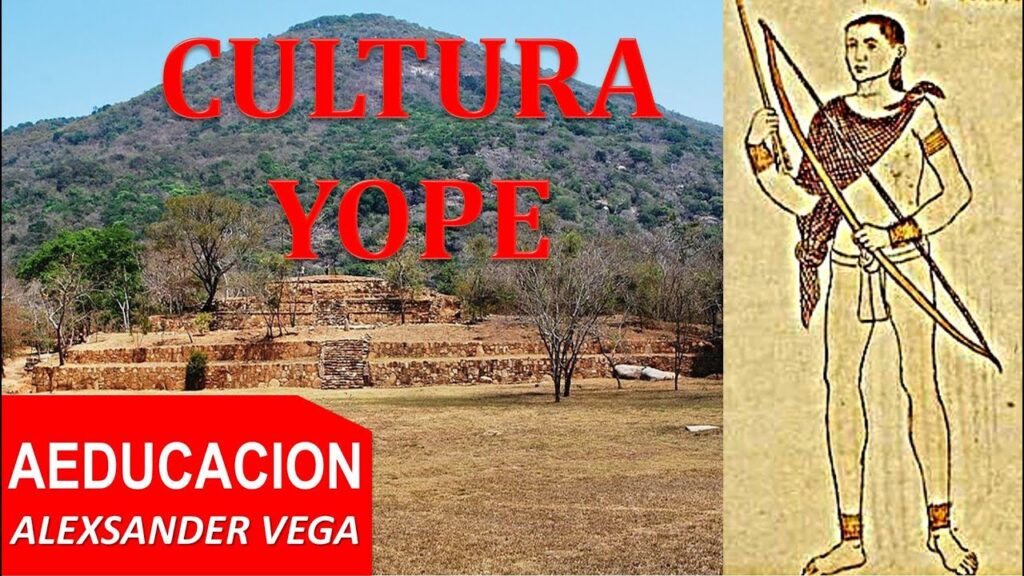The Enigmatic Legacy of the Yope Culture
The Yope culture, a mysterious pre-Columbian civilization, has long intrigued historians and archaeologists. Little is known about the Yope, a society that once thrived in the territories now part of the Mexican states of Guerrero and Oaxaca. Their legacy is an enigma wrapped in the sparse archaeological evidence that withstands time, leaving many aspects of their culture shrouded in mystery.
Unlike the grandeur of the Maya or the Aztecs, the Yope culture did not leave behind monumental structures or an extensive written record. However, they are believed to have been formidable warriors, resisting Aztec expansion with fierce independence. Their name is often found in Aztec codices, hinting at a society that was both respected and feared by their more famous neighbors.
One of the most significant Yope hallmarks is their artistry in the form of stone sculptures. The sculptures often depict formidable figures, thought to represent warriors or deities, characterized by distinctive facial features with wide noses and prominent chins. These visages give a face to the Yope and provide a crucial insight into their societal structures and mythologies.
The Yope’s influence stretched along the Pacific coastline, where they engaged in extensive trade networks. This economic activity is evidenced by the discovery of seashells from distant shores in their archaeological sites, suggesting a far-reaching connection with other Mesoamerican cultures. Trade likely played a pivotal role in the rise and sustainability of the Yope, showcasing their strategic prowess in exploiting the natural resources and geographical advantages of their homeland.
Despite the limited information available, the Yope culture’s resilience is inspiring. Their determined preservation of identity in the face of larger empires speaks volumes about their societal cohesion and values. Scholars continue to piece together the puzzle of the Yope, hoping to unveil more about their ways of living, governing, and their eventual demise, which remains, as much of their history, veiled in the depths of antiquity.
Understanding the Yope Resistance Against the Mexica Empire
The history of the indigenous peoples of Mexico is fraught with tales of resistance and battles for autonomy, none more fascinating than the story of the Yope resistance against the powerful Mexica Empire. The Yopes, native to the region now known as Guerrero, showed remarkable resilience and an indomitable spirit in the face of an expanding Mexica presence. Their story, often overshadowed by the narratives of larger empires, provides a powerful example of the localized efforts to maintain cultural identity and autonomy during the pre-Columbian period in Mesoamerica.
As the Mexica Empire sought to expand its dominion further south, they encountered stiff resistance from the Yopes. Renowned for their warrior culture, the Yopes fiercely defended their land and freedom, despite the Mexica’s advanced military tactics and greater numbers. Unlike many other indigenous groups of that era, the Yope did not fall quickly under the Mexica yoke. They took advantage of their region’s challenging topography, which included rugged mountains and thick forests, using it as a natural barricade to hinder Mexica advances and to launch counterattacks.
The Yopes’ defiance was not only a military struggle but also an ideological one. They resisted the Mexica’s attempts to impose their religious and social structures, clinging steadfastly to their own beliefs and systems of governance. This determined stand to preserve their way of life highlights the diversity of pre-Hispanic cultures in Mexico and underscores the significance of regional identity. By holding onto their traditions, the Yopes became a beacon of resistance for other Mesoamerican cultures during a time of sweeping imperial conquest and cultural assimilation.
The confrontation between the Yopes and the Mexica Empire was chronicled by early Spanish historians, who documented the indomitable spirit of the Yope warriors despite their eventual defeat. Though they ultimately succumbed to the might of the Mexica, the legacy of Yope resistance lived on, inspiring subsequent generations to admire their valiant efforts to resist subjugation. The history of the Yope resistance serves as a vivid reminder of the complex tapestry of indigenous resistance that characterized the pre-Columbian Americas.
The Yope: A Civilization of Warriors and Their Strategies
The Yope, an ancient civilization that inhabited the Guerrero region of Mexico, are recognized for their reputation as fierce warriors. Unlike their contemporaries, the Aztecs and the Mayas, the Yope people are less known but their military tactics were highly advanced for their time. With an emphasis on both offense and defense, the Yope warriors perfected the art of warfare through rigorous training and strategic brilliance.
One of the key elements of Yope warfare was the use of the rugged terrain of the Guerrero mountains to their advantage. They employed guerrilla tactics, launching surprise attacks from the dense forests that hid their numbers and movements. Their understanding of the landscape allowed them not only to ambush invading armies but also to retreat and regroup with speed and efficiency that their enemies often found bewildering.
Weaponry and armor played crucial roles in the Yope’s combat style. They crafted weapons suited to both close-combat and ranged attacks — from obsidian-edged swords and spears to slings and atlatls. Yope armor was made from materials such as cotton and leather, which offered protection without sacrificing mobility. Adornments on their armor served not only decorative purposes but also psychological ones, often designed to intimidate opponents with depictions of fearsome deities and symbols of power.
Moreover, the Yope warriors were not only focused on physical preparedness. They incorporated elaborate rituals and war dances before battles, invoking their gods for strength and victory. These spiritual practices were integral to maintaining the morale of Yope forces and instilling fear in their adversaries. Such comprehensive and holistic approaches to warfare underscore their prowess and the reason why the Yope are remembered as a civilization of exceptional warriors.
Unveiling the Mysteries: Yope Culture and Traditions
The Yope, an ancient people whose history is enshrouded in the mists of time, were once a dominant culture in the southwestern part of Mexico long before the rise of the Aztecs. The Yope civilization has captured the imagination of adventurers and historians alike, offering a glimpse into a sophisticated society that flourished with unique traditions and beliefs. The few archaeological sites and historical records that pepper the region speak volumes about their advanced agrarian society and their resilient spirit in the face of external forces. Evidence of their cultural idiosyncrasies can be found in the artifacts displaying their intricate artwork and distinctive iconography.
One of the most compelling aspects of the Yope culture is their reverence for nature and the extensive mythology that permeated every facet of their lives. Giants of the earth and spirits of the waters were central to their belief system, which held that the natural world was alive with divine force. Their ceremonies and rituals often involved elaborate dances and offerings intended to appease these powerful natural entities. The remnants of monumental statues and preserved glyphs give us a precious insight into their cosmology and the rituals they performed to maintain harmony between their world and the supernatural.
Despite the relative obscurity of the Yope within the grand tapestry of Mexican history, their influence on the cultures that followed is undeniable. From the ruins of their great fortresses to the lingering folktales passed down through generations, the Yope have left an indelible mark. Researchers and enthusiasts continue to decode their history, offering us a fleeting connection to what was once a fascinating and enigmatic culture. The continued study of the Yope holds promise for an even greater understanding of the richness of pre-colonial Mexican history and the diversity of its peoples.
Legacy of the Yope: Influence and Contributions to Mexican Heritage
Mexico is a land whose history is as colorful as its vibrant cultures, dances, and traditions. Among the many groups that have shaped the Mexican ethos, the Yope people have carved a unique legacy. Though less known than the Aztecs or the Mayans, the Yope’s influence on Mexican heritage is undeniable and profound.
The Yope, primarily dwelling in the region now known as Guerrero, were known for their fierce independence. This indomitable spirit has permeated throughout Mexican history, inspiring countless uprisings and revolutions. The Yope were among the last to succumb to Spanish conquest, and their resistance is a testament to the enduring spirit of autonomy and resilience that is celebrated in Mexican culture today.
In addition to their spirit of resistance, the Yope had a remarkable knack for metallurgy, particularly in the art of goldsmithing. This craft not only contributed to the wealth of the region but also influenced Mexican jewelry designs that are popular to this day. Their techniques and motifs are echoed in contemporary pieces, reflecting a continuity of tradition that spans centuries.
Their religious beliefs and practices, while largely enigmatic, have left subtle imprints on the syncretic religious practices found in parts of Mexico. Elements of Yope cosmology are believed to have melded with Catholicism, resulting in a unique tapestry of beliefs that highlight the interaction between pre-Hispanic cultures and European influences.
Lastly, the Yope’s agricultural practices, adapted to the rugged terrain and climate of Guerrero, have informed the ways in which modern Mexicans approach farming in these areas. Their understanding of the land and its capabilities has influenced current agricultural methods and is a model for sustainable cultivation in the region. As we explore the depths of Mexican heritage, the legacy of the Yope continues to shine as a beacon of cultural richness and historical significance.



